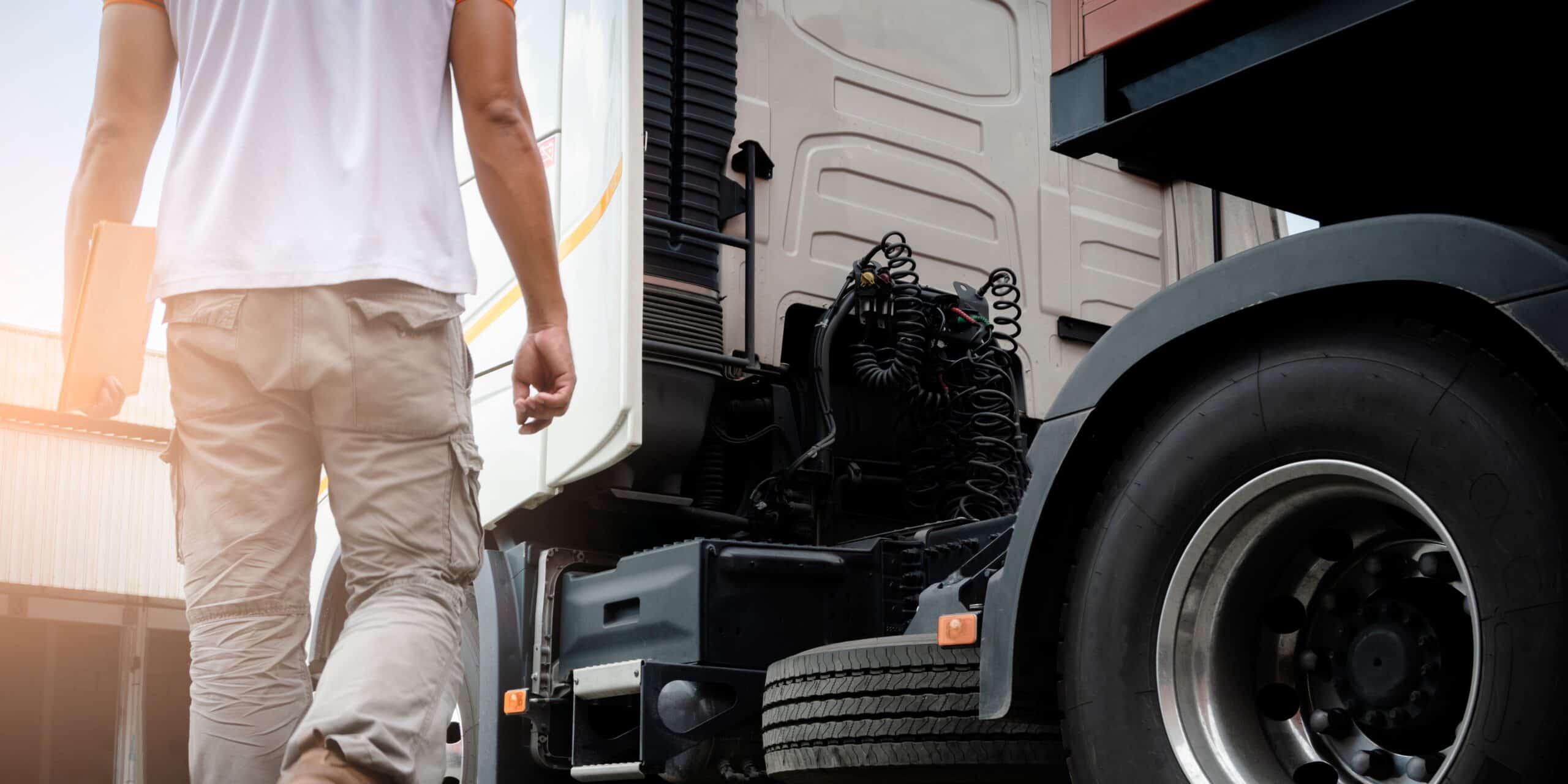When you know what to expect during your roadside inspection, you’ll be far more likely to pass with flying colors and help yourself get where you need to be on time. The inspectors that do these have no intention of making your day harder, but rather, they are in place in an effort to keep people safe on the roads.
Prepare yourself with the right, up-to-date documents, complete inspections on yourself and your vehicle, and know what they are looking for. The information is out there, when you know what is required of you, you’ll be able to prepare yourself as best as possible.
This is simply the best way to help yourself get through a roadside inspection without hassle and delay.
How Does a Roadside Truck Inspection Work?
The Federal Motor Carrier Safety Administration (FMCSA) defines a roadside inspection as official exams of both commercial motor vehicles and the drivers. The goal of these roadside inspections is to keep every driver on the road as safe as possible. With eight different levels of roadside inspections, you will be doing yourself a great benefit if you learn about each one.
Types of Roadside Inspections
The Commercial Vehicle Safety Alliance (CVSA) has eight different levels of roadside inspections.
Level I – North American Standard Inspection
This level of the roadside inspection involves an inspection of both the driver and vehicle and is often considered the most extensive of them all.
Inspection of the driver includes the following aspects:
- Driver’s license
- Medical certificates
- Skill Performance Evaluation (SPE)
- Alcohol or drug use
- Driver’s record of duty status
- Hours of service
- Use of seatbelt
- Vehicle inspection reports
Inspection of the vehicle includes these features:
- Brake systems
- Cargo securement
- Coupling devices
- Driveline or driveshaft
- Exhaust systems
- Frames
- Fuel systems
- Lighting devices
- Headlamps
- Tail lamps
- Stop lamps
- Turn signals
- Lamps or flags
- Steering mechanisms
- Suspensions
- Tires
- Van and open-top trailer bodies
- Wheels, rims, and hubs
- Windshield wipers
Level II – Walk-Around Driver/Vehicle Inspection
Level II of the roadside inspection process is essentially the same inspection as Level I, just without the inspector physically getting under the vehicle and examining the situation below.
The minimum inspection for the driver includes the following:
- Driver’s license
- Medical certificates
- Skill Performance Evaluation (SPE)
- Alcohol or drug use
- Driver’s record of duty status
- Hours of service
- Use of seatbelt
- Vehicle inspection reports
The minimum inspection for the vehicle includes the following aspects:
- Brake systems
- Cargo securement
- Coupling devices
- Driveline or driveshaft
- Exhaust systems
- Frames
- Fuel systems
- Lighting devices
- Headlamps
- Tail lamps
- Stop lamps
- Turn signals
- Lamps and flags
- Steering mechanisms
- Suspensions
- Tires
- Van and open-top trailer bodies
- Wheels, rims, and hubs
- Windshield wipers
Level III – Driver/Credential/Administrative Inspection
A Level III roadside inspection involves an examination of only the driver’s credentials. This driver inspection includes the following:
- Driver’s license
- Medical certificates
- Skill Performance Evaluation (SPE) if applicable
- Alcohol or drug use
- Driver’s record of duty status
- Hours of service
- Use of seatbelt
- Vehicle inspection reports
- Carrier identification and status
Level IV – Special Inspections
Level IV roadside inspections typically involve a one-time inspection of a specific item. These could be completed in order to support a study or to prove or disprove a potential trend.
Level V – Vehicle-Only Inspection
Level V inspections can be completed at any location and the driver does not need to be present.
These inspections involve examining the vehicle’s following features:
- Brake systems
- Cargo securement
- Coupling devices
- Driveline or driveshaft
- Exhaust systems
- Frames
- Fuel systems
- Lighting devices
- Headlamps
- Tail lamps
- Stop lamps
- Turn signals
- Lamps or flags
- Steering mechanisms
- Suspensions
- Tires
- Van and open-top trailer bodies
- Wheels, rims, and hubs
- Windshield wipers
- Passenger-carrying vehicles have additional inspection requirements
Level VI – North American Standard Inspection for Transuranic Waste and Highway Route Controlled Quantities (HRCQ) of Radioactive Material
The Level VI inspection is for vehicles or carriers transporting Highway Route Controlled Quantities (HRCQ) of radioactive material. There are additional requirements to the Level I roadside inspection.
Level VII – Jurisdictional Mandated Commercial Vehicle Inspection
The Level VII roadside inspection is a jurisdictional mandated inspection program that meets different requirements of the other roadside inspection levels. These could include inspection programs for the following, but is not limited to the following:
- School buses
- Limousines
- Taxis
- Shared-ride transportation
- Hotel courtesy shuttles
- Intrastate or intra-provincial operations
While only CVSA-certified inspectors may complete Levels I through VI, these inspections can be completed by designated government employees or jurisdiction-approved contractors.
Level VIII – North American Standard Electronic Inspection
The Level VIII roadside inspection is completed electronically while the vehicle is in motion. This means there is no direct involvement with an inspector.
This inspection includes the following:
- Descriptive location with GPS coordinates
- Electronic validation of who is operating the vehicle
- Driver’s license class and endorsements
- Driver’s license status
- Medical certificates
- Skill Performance Evaluation (SPE)
- Alcohol or drug use
- Driver’s record of duty status
- Hours of service
- USDOT or Canadian NSC number
- Power unit registration
- Operating authority
- Unified Carrier Registration (UCR) compliance
- Federal out-of-service orders
How Long Is a Roadside Inspection?
A Level I roadside inspection, which is often the most common, typically takes around 30 minutes to complete. This is for drivers that have their documents up to date and readily available. Roadside inspections are also typically easier and go quicker when you have a clean truck and you know where everything is.
Common Problems Found in Roadside Inspections
For the 2021 fiscal year, the most common vehicle violation found during roadside inspections was having an inoperable required lamp. This accounted for 11.66% of the violations.
Taking up 6.89% for driver violations, the leading driver violation is related to state or local laws. More specifically, it entails speeding 6 to 10 miles per hour over the speed limit.
What Can DOT Put You Out of Service For?
Failing your roadside inspection can be more than an inconvenience if you aren’t prepared.
Reasons the DOT can put you out of service (OOS) are as follows:
- Improper vehicle maintenance
- Lighting devices
- Brakes
- Tires
- Driver violations
- Not having proper documents
- Lack of endorsements
- Cargo violations
- Misprinted cargo
- Unauthorized stops
- Weight limits
Example of a Roadside Inspection
The most common type of roadside inspection, a Level I inspection, will involve an inspector. This inspector will need your paperwork and documents. Once you’ve provided these, you will likely be handed some paperwork to fill out as well.
While you are completing your paperwork, the inspector will complete a thorough inspection of your vehicle. Once everything (driver, documents, and vehicle) is inspected, you will receive the results. If you don’t receive any violations, you will be back on the road and on your way.
There are some violations that will allow you to get back on the road and rectify them later, “Out-of-Service” violations are required to be resolved immediately before you can drive again.
Staying Prepared for a Roadside Truck Inspection
A clean and organized truck is a great way to help yourself get through a roadside inspection quickly. Always keep yourself prepared. Learn about recommended truck driver essentials here.
Paperwork
Knowing where your paperwork is is important, and ensuring it’s up to date is crucial. A logbook or ELD compliance helps you keep your hours tracked easily. ELDs offer easy and paper-free compliance to track your hours of service.
You will also need to keep the following updated:
- Driver’s license
- Proper class and endorsements
- Medical certificates
- Skill Performance Evaluation (SPE)
- Driver’s record of duty status
- Vehicle inspection reports
Keeping a log of your hours and easy ELD accessibility organized and secure location in your vehicle will help you during any roadside inspection.
Insurance
The required minimum auto liability coverage limit is generally $750,000 for most truckers hauling over 10K LBS, although it can be up to $1 million or more depending on the type of operation, regulations, insurance carrier, and policy. When a roadside inspection is performed, it’s required to have proof of insurance readily available.
There are varying types of insurance coverage for truck drivers, but knowing what your specific insurance policy entails is highly beneficial. Understanding the types of insurance coverage and minimum limits you have will only be an advantage in case of a roadside inspection or if you are ever in need of utilizing it. Thankfully, with the varying coverages needed, you can often end up saving on your insurance policy by bundling them together!
Pre-Emptive Inspection
Conducting a pre-trip inspection yourself is the best way to be ready to pass a real roadside inspection. If you are thorough and sure you’ve completed a proper inspection on yourself and your vehicle and can’t find any issues, you are likely going to be fine in the case of a real roadside inspection.
A pre-trip inspection should be completed anytime before you get on the road. Driver Vehicle Inspection Reports or DVIRs, should be completed every trip, see what they entail here.
Decency
Being kind and courteous should never be a question. The person inspecting you and your vehicle is there to keep you and everyone on the road safe. They are there to do their job so you can continue to do yours as safely as possible.
Help them, they’re not trying to delay you. Be polite and follow their instructions from start to finish. The more prepared you are, the faster things will probably go for everyone involved.
Stay Organized
Keeping your truck clean and organized will likely help your roadside inspection run a little more smoothly. When you know where your documents are, you’re more likely to be able to check them regularly to be sure they’re up to date.
When you know where your emergency supplies are, you’ll be much less concerned. Make sure things in your truck have a home and be sure to know where they are at all times.
Know What Can Put You Out of Service
There are varying violations that can render you or your vehicle out of service. Knowing ahead of time what these are and checking them beforehand will help you avoid them.
Be Prepared and Keep Yourself on the Road
Properly preparing yourself is the easiest way to help yourself stay on the road. Roadside inspections are a way to help keep drivers and pedestrians safe on the road. As the driver of a commercial vehicle, you have responsibilities, and passing your roadside inspection is a major part of that.
No one wants to waste time, especially when they should be getting paid. When you have the right knowledge, documents, and equipment, you can always be prepared for a roadside inspection.


